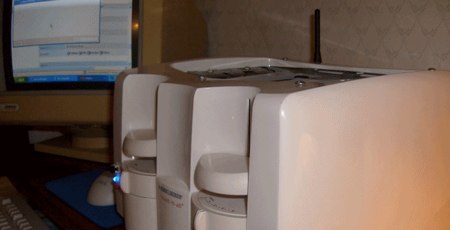
Like many nerds, we have our share of retro video games and nonworking consoles lying around. Every so often we feel like dragging one out and hoping it works.. Luckily for us, the Super Genintari is available to fulfill our fantasies of beating Ghosts ‘N Goblins. The Super Genintari is an Atari 2600, NES, SNES and Sega Genesis all rolled into one; you can even put in four cartridges at once and hook it up to your television with a simple AV cable.
[via DVICE]














